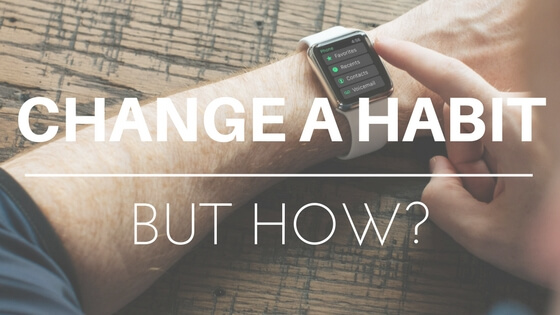How many New Year resolutions have you made in your life? How many have you successfully accomplished?
What about the commitment to eat healthier, exercise more, lose weight, drink less alcohol, text less, ‘unplug’ from social media, spend more quality time with family, read more, set up a charity, connect with that person, grow your business, write more, or whatever you had set as your resolution and haven’t done consistently yet?
Don’t worry, it’s not personal and it’s not your fault.
According to the psychological research of Professor John C. Norcross of University of Scranton, less than 10% of New Year resolutions are actually achieved.
There is some science behind WHY we don’t stick to our own resolutions.
First of all, we choose goals that are too large to be ‘digested’ for our brain. Second, we keep the same ‘software’ without an upgrade, so although the goals might change, the paths that lead to them, don’t. Hence, the problem.
So, let’s look into some science-driven strategies that can help us change the ‘software’ and set ‘digestible’ goals.[1]
First, let’s look into strategies to establish a new habit.
1. CHUNK IT DOWN: You MUST pick a small action. “Exercise more” or “eat healthier’ are too big of a challenge. If it’s a habit and you want a new one, it MUST be something really small. For example, instead of “exercise more” choose “run 20 minutes 3 times a day” or “take the stairs each morning to get to my office, not the elevator”, or “have a smoothie every morning with greens in it”. Choose only those small actions that you can commit to. Choose one of those to start with.[2]
2. ANCHOR IT: You MUST attach the new action to a previous habit. Figure out a habit you already have that is well established, for example, if you already go for a brisk walk 3 times a week, then adding on 10 more minutes for a run would be much easier. The existing habit “Go for a walk” now becomes the “cue” for the new habit: “Walk & run for 10 more minutes.” Your new “stimulus-response” is Go For Walk (Stimulus) followed by “Add 10 minutes of running.” Your existing habit of “walk through the door at your office” can now become the “cue” or stimulus for the new habit of “walk up a flight of stairs.” Your existing habit of “Walk into the kitchen in the morning” can now be the stimulus for the new habit of “Make a green smoothie.
3. A 7-DAY TEST: You MUST make the new action EASY to do for at least the first week. Because you are trying to establish a conditioned response, you need to practice the new habit from the existing stimulus from 3 to 7 times before it will “stick” on its own. To help you through this 3 to 7 times phase make it as EASY as possible. Write a note and stick it in your walking shoe that says “Total time today for walk & run is 20 minutes”. Write a note and put it where you put your keys, that says: “Today use the stairs.” Put the spinach in the blender and have all your smoothie ingredients ready to go in one spot in the refrigerator.
There is some speculation that we need 21 days to break a habit[3] and 66 days to establish a new habit in our system.[4] So making it super easy to start and follow, signing up for a programme or a course that can help you, is a great idea.
Another, an even more interesting observation, is how we use our SELF-STORIES. What we say to ourselves about ourselves. For example, if we don’t exercise one morning we could say ‘Oh well, that’s how it was last year. I can’t make it work’, or ‘Fine, one day I didn’t but tomorrow is a new start. I can make it’. These are two different stories that we can tell ourselves. Timothy Wilson describes a large body of impressive research of how stories can change behaviour long-term in his book, Redirect.[5] One technique he has researched is “story-editing”:
1. Write out your existing story. Pay special attention to anything about the story that goes AGAINST the new resolution you want to adopt. So if your goal is to learn how to unplug and be less stressed, then write a story that is realistic, that shows that it’s hard for you to de-stress, that you tend to get overly involved in dramas at home or at work.
2. Now re-write the story— create a new self-story. Tell the story of the new way of being. Tell the story of the person who appreciates life, and takes time to take care of him/herself.
Try it for yourself, 40,000 people tried these methods, including myself, and they work.[6] I spent one full day to re-write my stories and now find it much easier to change my behaviour.
What makes you create a change in your behaviour? I would love to hear from you.
With gratitude
Darya
P.S.: Did you like this post? Share it with your friends and people who might benefit!
[social_share style=”bar” align=”horizontal” heading_align=”inline” text=”” heading=”” facebook=”1″ twitter=”1″ google_plus=”1″ linkedin=”1″ pinterest=”1″ link=”” /]
References:
[1] Credit to Susan Weinschenk Ph.D
[3] http://science.howstuffworks.com/life/inside-the-mind/human-brain/form-a-habit1.htm
[4] http://psychcentral.com/blog/archives/2009/10/07/need-to-form-a-new-habit-66-days/
[5] Wilson, T. (2011) Redirect: The Surprising New Science of Psychological Change
[6] Stanford University Research by B.J. Fogg: http://tinyhabits.com/
